
| Northern Mountains |
| March-April-May Precipitation |
|
(Return to Main Feature) or go to CD1 | CD3 | CD4 | CD5 | CD6 | CD7 | CD8 |
|
Areas in north central New Mexico, especially locales in the higher terrain, tend to be affected less by the presence of a La Niña event during winter. However, by spring, deficits in precipitation are more common. During all La Niña events, the reduction is not great, and ranges from 81 % at El Vado to 92% of normal at Raton and Las Vegas. The well above average precipitation in 1985 certainly raises the average departure value. During the strong La Niña events the deficits are stronger, ranging from only 44% of the long term average at Santa Fe to 55% at El Vado and Red River. |
|
A description of the graphs is located at the bottom of the page. |
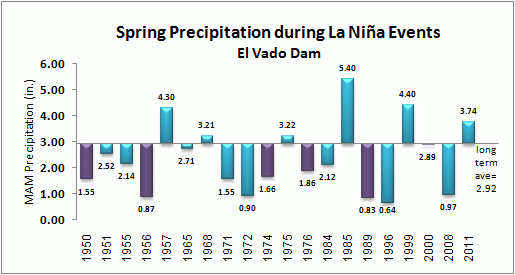 |
| Percent of Longterm Average for all La Niña Events = 81% , for strong La Niña Events = 55% |
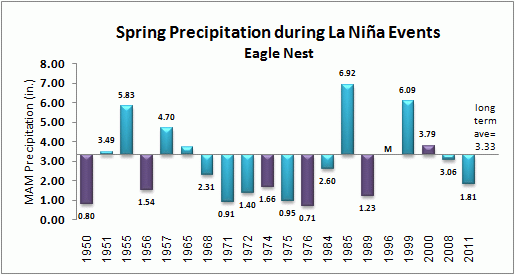 |
| Percent of Longterm Average for all La Niña Events = 85% , for strong La Niña Events = 49% |
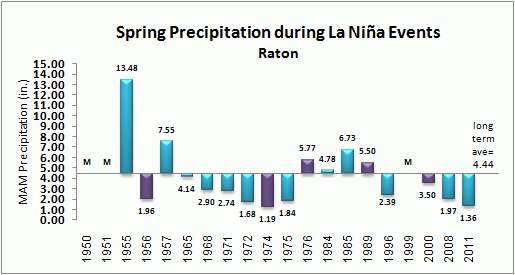 |
| Percent of Longterm Average for all La Niña Events = 92% , for strong La Niña Events = 81% |
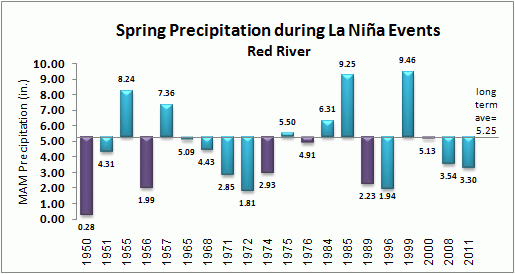 |
| Percent of Longterm Average for all La Niña Events = 87% , for strong La Niña Events = 55% |
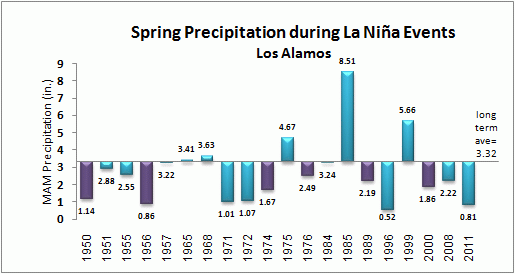 |
| Percent of Longterm Average for all La Niña Events = 81% , for strong La Niña Events = 51% |
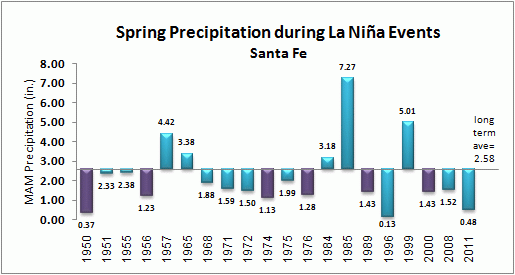 |
| Percent of Longterm Average for all La Niña Events = 85% , for strong La Niña Events = 44% |
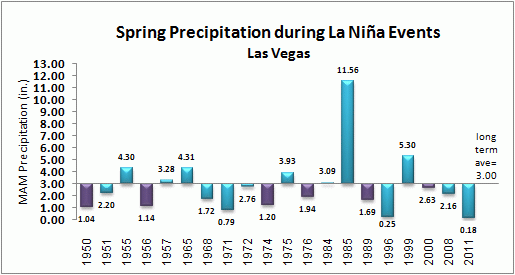 |
| Percent of Longterm Average for all La Niña Events = 92% , for strong La Niña Events = 54% |
|
Precipitation values for 3-month periods during 19 La Niña Events since 1949-50 are plotted with respect to the long term precipitation average, listed to the right of the graph. The precipitation totals for each 3-month period are plotted above or below each bar. Years for which the La Niña Event was considered to be strong are colored in purple. "M" represents a 3-month period with missing data. Finally, the percents of longterm normal for all La Niña events and for the strong La Niña events are listed below each graph. |